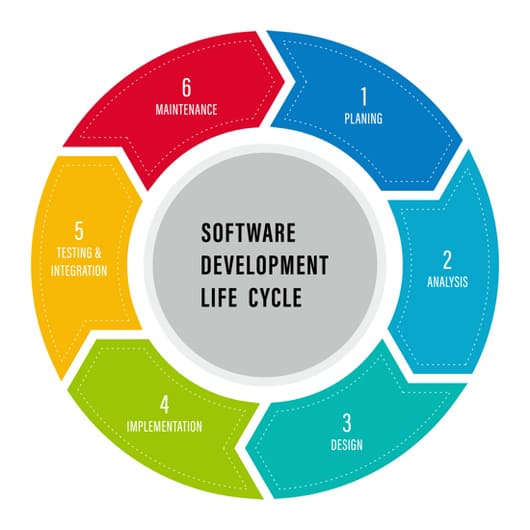
By utilizing diverse types of tools effectively, organizations can enhance their overall application security posture significantly. The benefits include early detection and remediation of vulnerabilities before they are exploited, reduced security risks and potential financial loss, compliance with industry regulations, and improved customer trust. However, it is crucial to choose the right combination of tools based on the organization’s specific needs and requirements.
Table of Contents
What Is Application Security Testing
Application Security Testing (AST) is a critical process in the field of software development and cybersecurity. It involves evaluating software applications for potential vulnerabilities, weaknesses, and security risks to ensure that they are resilient against malicious attacks. The goal of application security testing is to identify and rectify security flaws before they can be exploited by cybercriminals, thereby enhancing the overall security posture of the application. This testing process encompasses various techniques and methodologies to comprehensively assess the security of an application. It typically involves both manual and automated methods to uncover a wide range of vulnerabilities, such as those related to authentication, authorization, data leakage, input validation, code injection, and more. By simulating real-world attacks, application security testing aims to replicate the actions of potential attackers to discover weaknesses that could be exploited.
There are several types of application security testing techniques, each serving a unique purpose. Here are top 10 types of application security tools:
- Static Application Security Testing (SAST)
- Dynamic Application Security Testing (DAST)
- Interactive Application Security Testing (IAST)
- Runtime Application Self-Protection (RASP)
- Database security scanning
- API security testing
- Cloud-native application security testing (CNAST)
- Software composition analysis (SCA)
- Web application security testing (WAST)
- Mobile application security testing (MAST)
1. Static Application Security Testing (SAST)
SAST, as a crucial component of software development, employs static code analysis to identify vulnerabilities and weaknesses in the programming code, thereby inducing a sense of caution and vigilance among developers. This application security testing tool examines the source code without actually executing it, allowing for a comprehensive examination of potential flaws. By analyzing the code structure, syntax, and logic flow, SAST can detect common coding errors that may lead to vulnerabilities such as SQL injections or buffer overflows. It provides developers with valuable insights into code quality and assists in identifying security issues before the application is deployed.
One advantage of SAST is its ability to find complex vulnerabilities that are difficult to detect through other means of testing. However, it does have limitations due to its inability to assess runtime behavior or uncover certain types of vulnerabilities like those related to configuration issues or authentication mechanisms. Therefore, while SAST plays a vital role in enhancing application security by detecting potential coding flaws early in the development process, it should be complemented with other types of security testing tools for a more comprehensive assessment.
2. Dynamic Application Security Testing (DAST)
Dynamic Application Security Testing (DAST) employs the technique of analyzing an application while it is running in order to identify vulnerabilities and weaknesses, providing a real-time assessment of the application’s security posture. This method involves simulating attacks on the application from outside sources, such as hackers or malicious users, to uncover potential security flaws. DAST tools interact with the application through its user interface, sending requests and analyzing responses to detect any potential vulnerabilities.
Here is how DAST works:
Comprehensive Scanning
DAST tools perform a comprehensive scan of an application by exploring different functionalities and features. They simulate various attack scenarios by sending different types of HTTP requests and analyzing how the application responds. By doing so, these tools can identify common security vulnerabilities such as cross-site scripting (XSS), SQL injection, and insecure direct object references.
Real-Time Monitoring
One of the key advantages of DAST is that it provides real-time monitoring of an application’s security posture during runtime. It allows organizations to continuously assess their applications’ security status, especially when new updates or changes are introduced. This dynamic approach ensures that any newly introduced vulnerabilities or weaknesses are detected promptly.
False-Positive Reduction
DAST tools aim to minimize false positives by focusing on actual vulnerabilities rather than potential issues that may not pose a significant threat. These tools employ various techniques such as signature-based detection, heuristic analysis, and pattern matching to differentiate between genuine vulnerabilities and benign behaviors.
Integration With Development Processes
DAST can be integrated into the software development lifecycle (SDLC) to ensure that security testing is conducted throughout the development process rather than just before deployment. By integrating DAST into continuous integration/continuous deployment (CI/CD) pipelines, organizations can automate security assessments at every stage of development and quickly address any identified issues.
3. Interactive Application Security Testing (IAST)
Interactive Application Security Testing (IAST) leverages the continuous monitoring of an application’s runtime environment to identify vulnerabilities, enhancing the detection and remediation of security flaws. Unlike other application security testing techniques, IAST combines elements of both Dynamic Application Security Testing (DAST) and Static Application Security Testing (SAST). By integrating with the application during runtime, IAST is able to provide more accurate results by analyzing real-time data and interactions between different components. This approach allows for a deeper understanding of the application’s behavior, making it easier to identify potential security risks.
One of the key advantages of IAST is its ability to provide comprehensive vulnerability management. Traditional security testing tools often struggle with identifying complex vulnerabilities that can only be discovered when an application is running in its native environment. However, by actively monitoring an application during runtime, IAST is able to detect these vulnerabilities more effectively. Moreover, since it analyzes real-time data and interactions, it reduces false positives and provides developers with precise information on how vulnerabilities can be exploited.
Another benefit of IAST is its ability to integrate seamlessly into existing development processes without significantly impacting performance or requiring extensive code modifications. It can be easily integrated into Continuous Integration/Continuous Deployment (CI/CD) pipelines or used as a standalone tool during development cycles. This flexibility makes it a valuable resource for organizations looking to enhance their overall application security posture. With its comprehensive vulnerability management capabilities and seamless integration into existing development processes, IAST proves to be a valuable tool in enhancing overall application security.
4. Runtime Application Self-Protection (RASP)
Runtime Application Self-Protection (RASP) is a proactive security approach that embeds protection mechanisms directly into the application’s runtime environment, providing an additional layer of defense against potential attacks. This technique aims to detect and prevent attacks in real time by monitoring the behavior of the application during execution. By integrating security controls within the application itself, RASP tools can provide more accurate and effective protection compared to traditional security measures that rely on external devices or network-based defenses.
To achieve its objectives, RASP utilizes various techniques and functionalities, including:
Attack Detection
RASP tools continuously monitor the application’s runtime behavior to identify any suspicious activities or deviations from expected patterns. They employ sophisticated algorithms and rule-based engines to analyze requests, responses, and data flows for signs of malicious intent.
Real-Time Blocking
When a potential attack is detected, RASP tools can take immediate action by blocking or mitigating the threat at runtime. This proactive approach helps minimize the impact of attacks and prevents them from exploiting vulnerabilities within the application.
Context-Aware Analysis
RASP solutions consider contextual information such as user identity, session state, and business logic to better understand normal behavior patterns. This context awareness enables them to distinguish between legitimate actions and potential threats more accurately.
Integration With Development Processes
RASP tools can be seamlessly integrated into the software development lifecycle (SDLC), allowing developers to identify vulnerabilities early on during code creation. By providing feedback directly within their integrated development environments (IDEs), developers can address security issues promptly before they become major concerns.

Runtime Application Self-Protection offers a comprehensive approach to enhance application security by embedding protection mechanisms directly into the runtime environment. By combining attack detection capabilities with real-time blocking features and integration with development processes, RASP tools provide organizations with an effective means of protecting their applications against emerging threats while minimizing false positives and improving overall system performance.
5. Database Security Scanning
Database security scanning involves the use of specialized software or tools that systematically assess the database infrastructure for any weaknesses or flaws that could be exploited by malicious actors. This process typically includes conducting comprehensive scans to identify potential security issues such as misconfigurations, weak access controls, and outdated software versions.
One of the primary goals of database security scanning is to proactively identify and address vulnerabilities before they can be exploited by attackers. By regularly scanning databases, organizations can gain insights into their overall security posture and take appropriate actions to strengthen their defenses. Furthermore, database security scanning plays a vital role in ensuring compliance with regulatory requirements and industry best practices. It helps organizations meet data protection standards by identifying areas where improvements are needed in terms of access controls, encryption mechanisms, or data handling processes. By employing this proactive approach towards identifying vulnerabilities in databases, organizations can mitigate potential risks associated with unauthorized access, data breaches, or other malicious activities.
6. API Security Testing
API security testing is a critical aspect of ensuring the integrity and protection of application programming interfaces, allowing organizations to identify and address potential vulnerabilities that could be exploited by malicious entities. API security testing involves various techniques and tools to assess the security posture of APIs comprehensively. One such technique is web application security testing, which examines the vulnerabilities present in web applications that interact with APIs. By conducting web application security testing, organizations can identify common weaknesses like SQL injection, Cross-Site Scripting (XSS), or insecure direct object references that could potentially compromise the API’s confidentiality, availability, and integrity.
Another approach to API security testing is using static and dynamic analysis techniques. Static analysis involves analyzing an API’s source code without executing it. This type of analysis can identify coding flaws, insecure configurations, or hard-coded credentials in the codebase. On the other hand, dynamic analysis involves interacting with an API while it is running to observe its behavior and detect any vulnerabilities related to input validation, access control, or authentication mechanisms. Additionally, Software Composition Analysis (SCA) tools can play a crucial role in API security testing by scanning for vulnerable third-party libraries or components used within an API implementation.
Incorporating these different approaches allows organizations to perform comprehensive assessments of their APIs’ security posture. By utilizing web application security testing techniques along with static and dynamic analysis tools like SAST (Static Application Security Testing) and SCA (Software Composition Analysis), organizations can proactively identify and remediate any vulnerabilities before they are exploited by attackers. Ensuring robust API security not only protects sensitive data but also maintains customer trust in an increasingly interconnected digital landscape where APIs serve as a gateway for seamless integration between different systems and applications.
7. Cloud-Native Application Security Testing (CNAST)
Cloud-Native Application Security Testing (CNAST) involves assessing the security posture of cloud-native applications, leveraging techniques such as container scanning, vulnerability management, and threat modeling to identify and mitigate potential risks in a rapidly evolving cloud environment. CNAST focuses on ensuring the security of applications that are designed specifically for cloud platforms and take advantage of their inherent capabilities. One important aspect of CNAST is software composition analysis, which involves examining the components and libraries used in an application to identify any known vulnerabilities or weaknesses. This helps developers make informed decisions about the software they include in their applications and allows them to address any potential security issues before deploying the application.
Another key component of CNAST is mobile application security testing. Mobile application security testing involves analyzing the code, configuration settings, permissions, and other aspects of mobile applications to identify vulnerabilities or weaknesses that could be exploited by attackers. Additionally, CNAST also encompasses web application vulnerabilities, as many cloud-native applications have web interfaces through which users interact with them. Assessing web application vulnerabilities helps identify common attack vectors like SQL injection or cross-site scripting that can compromise the integrity and confidentiality of data. To effectively manage and orchestrate these various aspects of CNAST, organizations often rely on vulnerability management dashboards or platforms. These tools provide a centralized view of all identified vulnerabilities across different cloud-native applications, enabling organizations to prioritize remediation efforts based on risk levels.
8. Software Composition Analysis (SCA)
Software composition analysis (SCA) is a critical aspect of assessing the integrity and reliability of software components, enabling organizations to proactively identify potential vulnerabilities or weaknesses in the libraries and frameworks used within their applications. SCA tools analyze the source code and dependencies of an application to detect any security flaws or outdated components that may introduce risks. By examining the software development lifecycle, SCA tools can provide valuable insights into the security posture of an application at different stages, from design to deployment.
Note:
To effectively perform software composition analysis, organizations utilize specialized security tools that offer various functionalities. These tools help identify and mitigate potential risks by analyzing the codebase for known vulnerabilities and providing recommendations for remediation.Some key features of SCA tools include:
Dependency Analysis
SCA tools examine all external libraries and frameworks utilized by an application, providing visibility into their versions and dependencies. This allows organizations to identify outdated or vulnerable components that pose security risks.
Vulnerability Scanning
SCA tools employ databases containing information about known vulnerabilities in third-party libraries and frameworks. They cross-reference these databases with the dependencies identified in an application’s codebase to detect any matches.
License Compliance
In addition to identifying security vulnerabilities, SCA tools also help ensure compliance with open-source licenses. They analyze the licenses associated with each library or framework used within an application to flag any licensing conflicts or restrictions.
Continuous Monitoring
SCA is not a one-time activity but a continuous process throughout the software development lifecycle. Tools equipped with continuous monitoring capabilities can automatically detect new vulnerabilities as they emerge, ensuring ongoing protection against potential threats.
Software Composition Analysis plays a crucial role in enhancing application security by detecting vulnerabilities in third-party components early on in the development process. By leveraging specialized testing tools, organizations can proactively address these issues before deploying their applications into production environments, thereby reducing the risk of exploitation by malicious actors.
9. Web Application Security Testing (WAST)
Web Application Security Testing (WAST) involves conducting comprehensive assessments of web applications to identify and mitigate potential vulnerabilities and weaknesses, ensuring robust protection against unauthorized access or malicious attacks. Organizations perform security testing on their web applications to ensure that they are secure and to identify any potential vulnerabilities before they can be exploited by hackers.
WAST helps organizations detect security vulnerabilities by simulating real-world attack scenarios, such as Cross-Site Scripting (XSS), SQL injection, or remote code execution. To effectively perform security testing, organizations often use automated tools specifically designed for Web Application Security Testing. These tools help streamline the process by automatically scanning the web application’s code, configurations, and logic for known vulnerabilities or common security issues. They can also simulate various attack vectors to identify potential weaknesses in the system. By automating certain aspects of the testing process, these tools enable organizations to efficiently identify security issues without relying solely on manual inspections.
One of the primary objectives of WAST is to identify security flaws that could potentially lead to unauthorized access or data breaches. By performing a thorough assessment of the web application’s architecture, functionality, and implementation details, organizations can uncover vulnerabilities that may have been overlooked during development. Additionally, WAST allows organizations to assess their compliance with industry standards and best practices for web application security.
10. Mobile Application Security Testing (MAST)
Mobile application security testing (MAST) is a meticulous process that involves conducting comprehensive assessments of mobile applications to identify and mitigate potential vulnerabilities, ensuring robust protection against unauthorized access or malicious attacks. MAST plays a crucial role in this program by systematically evaluating the security posture of mobile applications. The primary objective of MAST is to identify security flaws present within the mobile application code or design. This is achieved through various techniques such as static analysis, dynamic analysis, and manual code review.
Static analysis involves examining the source code without executing it and searching for known patterns or vulnerabilities. Dynamic analysis, on the other hand, involves running the application on emulators or actual devices to observe its behavior and identify any vulnerabilities that may arise during runtime. Additionally, manual code review allows expert analysts to manually inspect the codebase for potential flaws that automated tools might miss.
To streamline and automate the MAST process, organizations often utilize vulnerability scanners specifically designed for mobile applications. These scanners perform automated scans of the application’s binary code or package file, identifying common vulnerabilities such as insecure data storage, weak encryption mechanisms, or inadequate authentication protocols. By leveraging these tools alongside human expertise and manual testing techniques, organizations can ensure a comprehensive evaluation of their mobile applications’ security posture and take necessary measures to address any identified weaknesses proactively.
How To Coordinate Application Security Testing
Coordinating application security testing like an expert involves a systematic and well-planned approach to ensure comprehensive coverage and effective remediation of vulnerabilities. Here’s a step-by-step guide to help you coordinate application security testing:
Define Objectives and Scope
Clearly outline the objectives of the security testing. What vulnerabilities are you aiming to identify? Determine the scope of testing, including the specific applications, components, and functionalities that will be assessed. This step ensures that everyone involved understands the goals and boundaries of the testing process.
Assemble a Cross-Functional Team
Form a team that includes developers, security experts, testers, and other relevant stakeholders. Cross-functional collaboration brings diverse perspectives to the table and ensures that both security and functionality aspects are considered.
Select Appropriate Testing Methods
Choose the appropriate testing methods based on the type of application, its technology stack, and the potential risks involved. Decide whether you’ll use a combination of static analysis, dynamic testing, penetration testing, or other techniques to comprehensively assess the application’s security.
Create a Testing Plan
Develop a detailed testing plan that outlines the testing approach, methodologies, tools to be used, testing schedule, and responsibilities of each team member. Address any prerequisites, such as access to testing environments, sample data, and testing credentials.
Perform Testing and Analysis
Execute the testing plan by running the chosen security testing techniques on the application. Document and analyze the results, classifying vulnerabilities based on their severity and potential impact. Prioritize the vulnerabilities based on the risks they pose to the application and its users.
Report and Remediate Vulnerabilities
Generate a comprehensive report detailing the findings, including descriptions of vulnerabilities, their potential impact, and recommendations for mitigation. Work with the development team to prioritize and address the identified vulnerabilities. Provide clear guidance on how to remediate each vulnerability, and offer support throughout the remediation process.
Continuous Improvement
After the initial round of security testing, incorporate the lessons learned into your development process. Implement best practices, update security guidelines, and consider integrating security testing earlier in the development lifecycle. Regularly revisit your security testing strategy to adapt to new threats and technologies.
Benefits of Application Security Testing Tools
Application security testing tools offer a wide range of benefits that contribute to the overall security and reliability of software applications. Here are some key advantages of using these tools:
Early Vulnerability Detection
Application security testing tools can identify vulnerabilities in the early stages of the development process, enabling developers to address issues before they become more complex and costly to fix.

Reduced Security Risks
By uncovering vulnerabilities and weaknesses, these tools help mitigate the risk of security breaches, data leaks, and unauthorized access to sensitive information.
Cost Savings
Detecting and addressing security vulnerabilities early in the development lifecycle is more cost-effective than dealing with breaches and fixes after the application has been deployed. This can save organizations significant financial resources.
Compliance and Regulations
Application security testing tools assist organizations in adhering to industry regulations and compliance standards by ensuring that applications meet required security benchmarks.
Enhanced Reputation
By proactively addressing security concerns and delivering secure applications, organizations can bolster their reputation and build trust among users, clients, and partners.
Time Efficiency
Automated testing tools can quickly scan and analyze code, significantly reducing the time required to identify vulnerabilities compared to manual code reviews.
Comprehensive Coverage
Application security testing tools can cover a wide range of vulnerabilities and security issues, including those that might be overlooked in manual code reviews.
Consistency
Automated tools provide consistent and repeatable results, ensuring that the same set of tests is applied consistently across different stages of development.
Frequently Asked Questions
Are There Any Free or Open-Source Application Security Testing Tools Available?
Yes, there are several free or open-source application security testing tools available. These tools can help organizations identify and address vulnerabilities in their software applications. One example of such a tool is OWASP ZAP (Zed Attack Proxy), which is widely used for detecting common web application vulnerabilities. Another tool is SonarQube, which provides static code analysis to detect coding errors and security vulnerabilities. Additionally, Nikto is a popular open-source web server scanner that helps identify potential security issues in web applications.
Note:
It is important to note that while these tools can be effective, they may not provide the same level of comprehensive testing and support as some commercial options. Therefore, organizations should carefully evaluate their specific requirements and consider a combination of both free/open-source tools and commercial solutions for robust application security testing.What Are Some Common Challenges in Implementing Application Security Testing?
One common challenge is the lack of awareness or understanding of the importance of application security and its potential risks. Another challenge lies in the complexity and diversity of modern applications, which often incorporate numerous interconnected components and technologies. Testing such complex systems requires expertise in various areas, making it difficult to find individuals with the necessary skills and knowledge. Ensuring that testing processes are integrated seamlessly into the development lifecycle can be challenging due to time constraints and conflicting priorities. Lastly, organizations may encounter resistance from developers who perceive security testing as an obstacle to their productivity or who have limited knowledge about secure coding practices.
Can Application Security Testing Tools Be Integrated With CI/CD Pipelines?
Yes, application security testing tools can be integrated with CI/CD pipelines. This integration allows for the automation of security testing throughout the software development lifecycle, ensuring that vulnerabilities are identified and addressed early on. By incorporating security testing into the CI/CD pipeline, organizations can achieve a more secure and reliable software delivery process. These tools can scan the code for common vulnerabilities, perform dynamic analysis to identify potential weaknesses in runtime environments, conduct static analysis to detect coding errors and security flaws, and even simulate attacks to assess the resilience of applications.
How Often Should Application Security Testing Be Conducted?
The frequency at which this testing should be conducted depends on various factors, including the complexity of the application, its criticality to business operations, and the rate of change in the technology landscape. It is recommended to conduct application security testing regularly throughout the software development lifecycle (SDLC) to ensure that vulnerabilities are identified and addressed in a timely manner. This approach allows for early detection of potential security flaws and enables developers to make necessary fixes before deployment.
Are There Any Regulations or Compliance Standards That Require the Use of Application Security Testing Tools?
There are indeed regulations and compliance standards that require the use of application security testing tools. One example is the Payment Card Industry Data Security Standard (PCI DSS), which mandates regular vulnerability assessments and penetration testing for organizations that handle payment card information. Additionally, the Health Insurance Portability and Accountability Act (HIPAA) requires healthcare organizations to regularly conduct risk assessments, including evaluating their application security measures. The General Data Protection Regulation (GDPR) also emphasizes the importance of protecting personal data by implementing appropriate technical and organizational measures, such as using application security testing tools.
Conclusion

Application security testing tools provide a proactive approach to securing software applications. By employing a combination of different types of toolsets and coordinating testing efforts effectively, organizations can enhance the overall security posture of their applications while minimizing risks associated with potential vulnerabilities. It is imperative for businesses to invest in these tools as part of a comprehensive cybersecurity strategy to mitigate potential threats and protect valuable assets.

